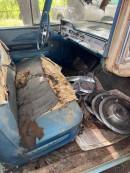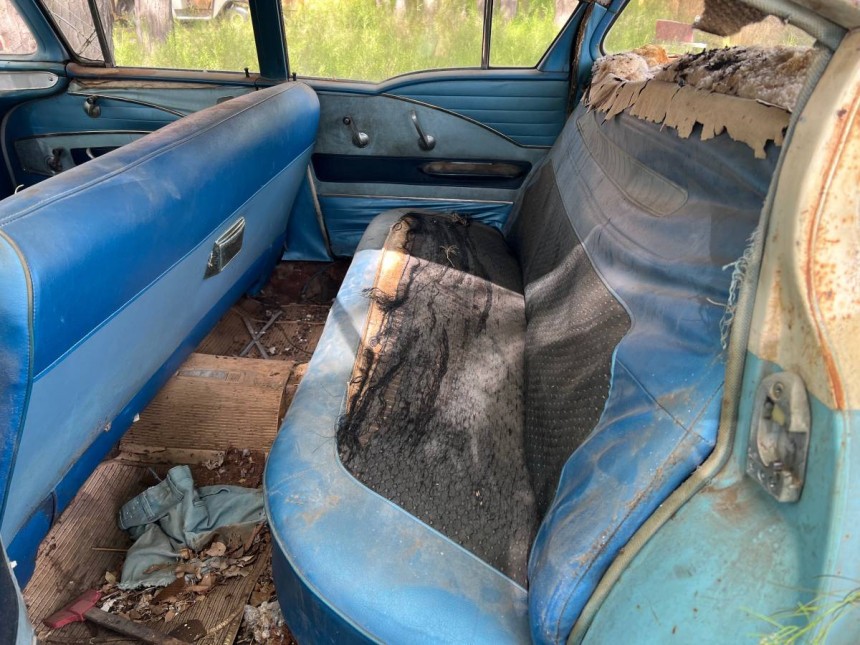The 1958 full-size lineup propelled Chevrolet to new heights in the automotive space, helping the company regain the top spot in the local battle.
Ford couldn't deal with the refreshed Chevy lineup, and it certainly couldn't deal with the rival's overnight sensation. The Impala became a hit from its early days, selling in big numbers despite launching as a Bel Air version.
The Impala story started in 1956 when Chevrolet attended GM's motor show with an Impala prototype. The company's big honchos were so impressed with the public's reaction that they rapidly decided to begin mass production. The Impala evolved from the drawing board to the assembly line in two years.
It debuted in 1958 as a hardtop and a convertible, as Chevrolet wanted full-size buyers to have a new top-of-the-line version. The Impala immediately became the coolest kid on the block, as Chevrolet didn't anticipate this early success. The immediate consequence was the relegation of the Bel Air to "plan B" for most buyers.
While the Impala was more expensive than the Bel Air, it was available with every piece of equipment in the lineup. The all-new 348 V8, despite landing on most full-size models available in 1958, was specifically introduced to provide Impala buyers with a big-block option. It was an Impala goodie that made its way to other full-size Chevys.
The Bel Air didn't necessarily lose its customer appeal, but the Impala was so successful that it received the most love from Chevrolet and buyers.
The Bel Air in these photos claims it's a survivor that carries the 1958 legacy, and yet, it can't find a home where the owner would begin a complete restoration.
The car landed online earlier this year when the owner was significantly more optimistic about the selling price. The price has since dropped significantly, but the car still can't convince Internet bidders that it's worth a second chance.
The most obvious thing that I'll highlight is its condition. The owner doesn't share specifics (and maybe that's a reason for people walking away) about the storage conditions, but it's safe to assume this Bel Air has been sleeping outside for at least a few years. It doesn't look as good as you'd expect, albeit the body resisted the invasion of rust. You'll obviously find such damage on the car, including on the floors, and the owner says it could be easily fixed or replaced.
I agree, rust on the floors is something a professional restorer can easily handle, but it all comes down to costs. Dealing with a massive amount of rust would involve more money, and if someone wants to buy the car for a restoration and eventually sell it to a collector, they must reduce costs as much as possible. You should put this Bel Air on a lift and closely inspect the undersides. It goes without saying that the all-original metal is more appealing to a collector, so fingers crossed that the floors can still be saved.
The rust has also made its way to other parts, including the headlights. It's a sign that the car has been sitting under the clear sky for some time, as the floors aren't the only ones invaded by the metal damage. You should, therefore, check out the car in detail, and if you can't see it in person, order a third-party inspection from a local company.
The Bel Air looks like a collector's dream at first glance. It claims to be completely original, and 99% of the car is still in place. It's unclear what's missing, but if the 99% estimate is correct, this Bel Air is a fantastic project. You shouldn't expect everything to be fixable, but a car that comes with 99% of the parts still in place increases its chances of remaining an all-original model after restoration.
The engine under the hood is the 283 V8. It was the base choice for the 1958 Bel Air buyers, while the 348 I told you about earlier was the top configuration. A 348 would have obviously been more intriguing, but an original 283 isn't bad news either, especially given that it was one of only two V8 choices for this model year.
The owner doesn't reveal if the engine starts and runs, but it's safe to assume it doesn't. You'll need a good mechanic to inspect what happens under the hood, but let's hope it turns over, as this car needs an original engine to remain in charge of putting the wheels in motion.
As I said earlier, the owner has significantly lowered their selling expectations. They initially hoped they'd get $6,500 for this rough Bel Air, but they're now willing to let it go for just $3,500.
The car seems to check all the boxes for a solid restoration candidate, so I wonder if the seller doesn't say the full story. Why is everybody walking away from this otherwise restorable Bel Air?
The Impala story started in 1956 when Chevrolet attended GM's motor show with an Impala prototype. The company's big honchos were so impressed with the public's reaction that they rapidly decided to begin mass production. The Impala evolved from the drawing board to the assembly line in two years.
It debuted in 1958 as a hardtop and a convertible, as Chevrolet wanted full-size buyers to have a new top-of-the-line version. The Impala immediately became the coolest kid on the block, as Chevrolet didn't anticipate this early success. The immediate consequence was the relegation of the Bel Air to "plan B" for most buyers.
The Bel Air didn't necessarily lose its customer appeal, but the Impala was so successful that it received the most love from Chevrolet and buyers.
The Bel Air in these photos claims it's a survivor that carries the 1958 legacy, and yet, it can't find a home where the owner would begin a complete restoration.
The car landed online earlier this year when the owner was significantly more optimistic about the selling price. The price has since dropped significantly, but the car still can't convince Internet bidders that it's worth a second chance.
I agree, rust on the floors is something a professional restorer can easily handle, but it all comes down to costs. Dealing with a massive amount of rust would involve more money, and if someone wants to buy the car for a restoration and eventually sell it to a collector, they must reduce costs as much as possible. You should put this Bel Air on a lift and closely inspect the undersides. It goes without saying that the all-original metal is more appealing to a collector, so fingers crossed that the floors can still be saved.
The Bel Air looks like a collector's dream at first glance. It claims to be completely original, and 99% of the car is still in place. It's unclear what's missing, but if the 99% estimate is correct, this Bel Air is a fantastic project. You shouldn't expect everything to be fixable, but a car that comes with 99% of the parts still in place increases its chances of remaining an all-original model after restoration.
The engine under the hood is the 283 V8. It was the base choice for the 1958 Bel Air buyers, while the 348 I told you about earlier was the top configuration. A 348 would have obviously been more intriguing, but an original 283 isn't bad news either, especially given that it was one of only two V8 choices for this model year.
As I said earlier, the owner has significantly lowered their selling expectations. They initially hoped they'd get $6,500 for this rough Bel Air, but they're now willing to let it go for just $3,500.
The car seems to check all the boxes for a solid restoration candidate, so I wonder if the seller doesn't say the full story. Why is everybody walking away from this otherwise restorable Bel Air?

















